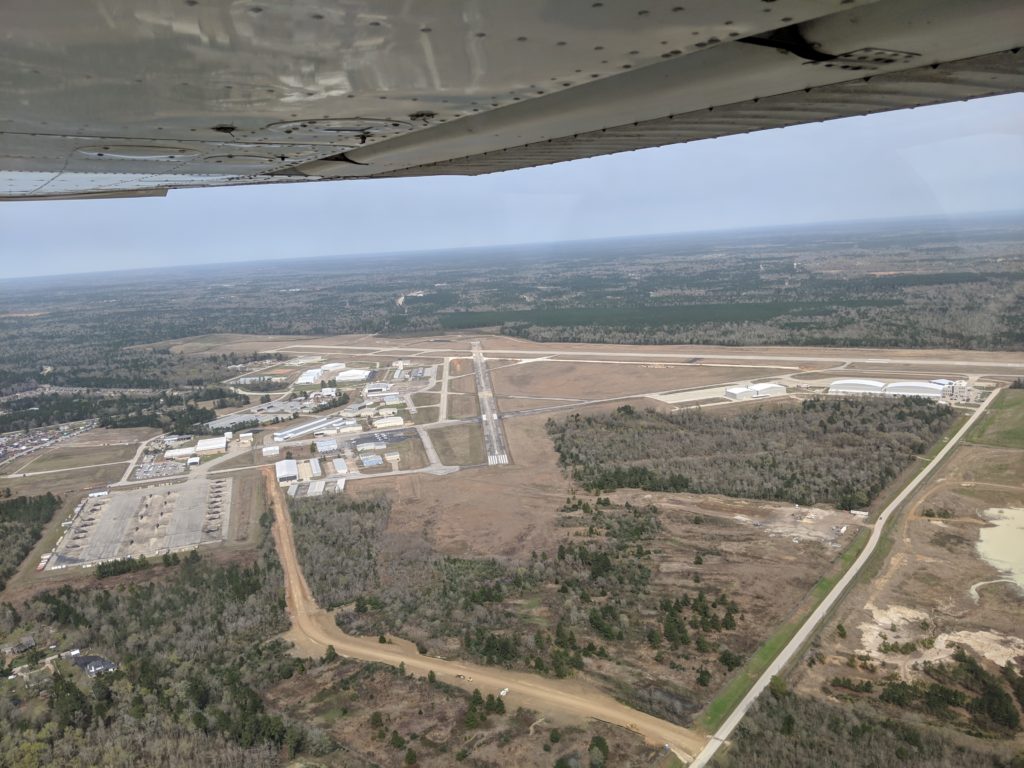
Houston is a busy place, with two large international airfields and a remarkable amount of air traffic. But nestled on the north end of the Class Bravo airspace is the Conroe airfield, a towered airport with two runways that offers an excellent destination for anyone within a few hundred nautical miles and a bit of an appetite.
Getting There
The Houston, Texas area is covered in a rather massive expanse of Class Bravo airspace. The two main airports located to the south keep things busy enough that this makes sense, but up on the northern edge the traffic is much lighter and it makes things a little easier for non-commercial pilots.
Conroe is located underneath the outermost shelf of the Class Bravo airspace, which starts at 4,000 feet and extends to 10,000 feet. For those on an IFR flight plan this doesn’t really matter, and a clearance direct to the field is a real possibility for those arriving from anywhere besides south of the field. For VFR pilots flight following is highly recommended and a Mode C transponder is required, but if you stay below that 4,000 foot layer of airspace you shouldn’t need to actually be cleared into the Bravo.
Airport
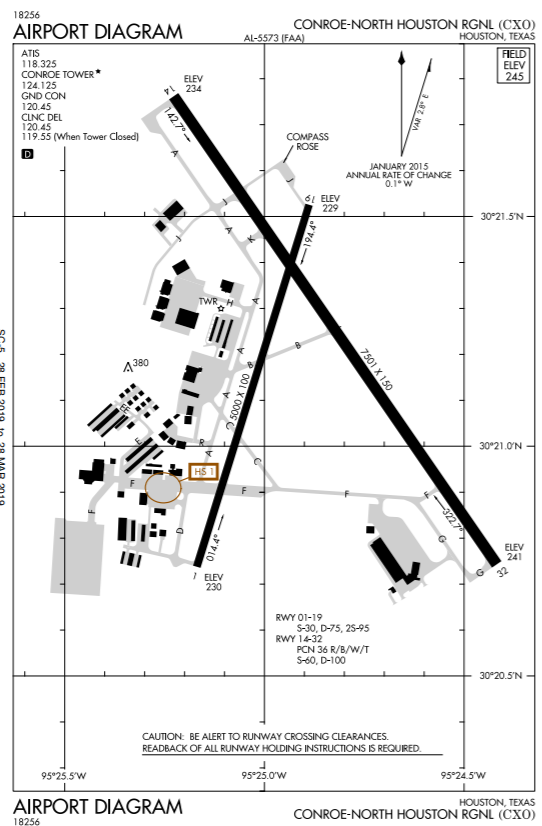
There are two runways at Conroe — the 5,000 foot 01/19 and the 7,501 foot 14/32. All runways have an RNAV / GPS approach available, but runway 14 also offers an NDB approach as well as an ILS / LOC approach for those days when the clouds are just a bit lower than usual. That NDB approach is notable as it’s only one of a handful that I’ve come across in my flights within the United States.
Something interesting to note is that all RNAV approaches into the airfield have a complete “T” structure allowing arrivals from pretty much every direction to have an easy turn to final. Except for runway 32, that is. There’s a one sided approach available here with a single leg on the northeast side of the approach. Arrivals from the south or west should expect direct to RILAY followed by a sporty turn to final.
FBO Facility and Fees
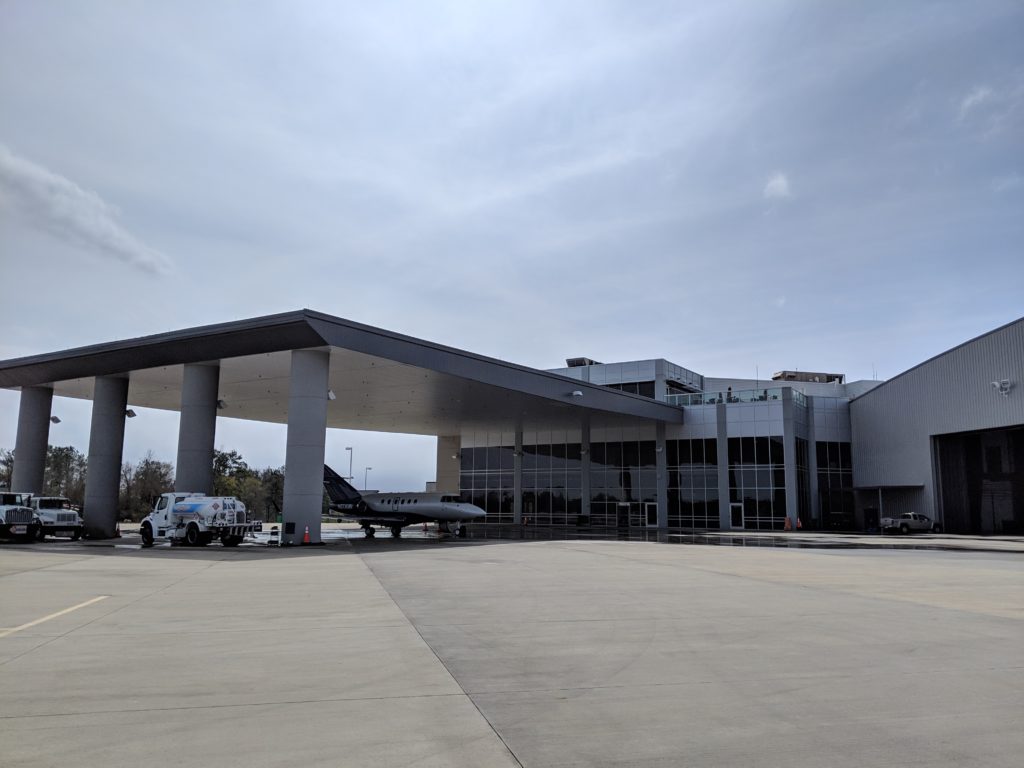
There are a couple FBOs on the field, the majority of which are grouped on the west side of the field. This includes avionics repair shops, self service fuel pumps, and more. I didn’t visit any of these, instead I went to the Galaxy FBO located on the southeast side of the field.
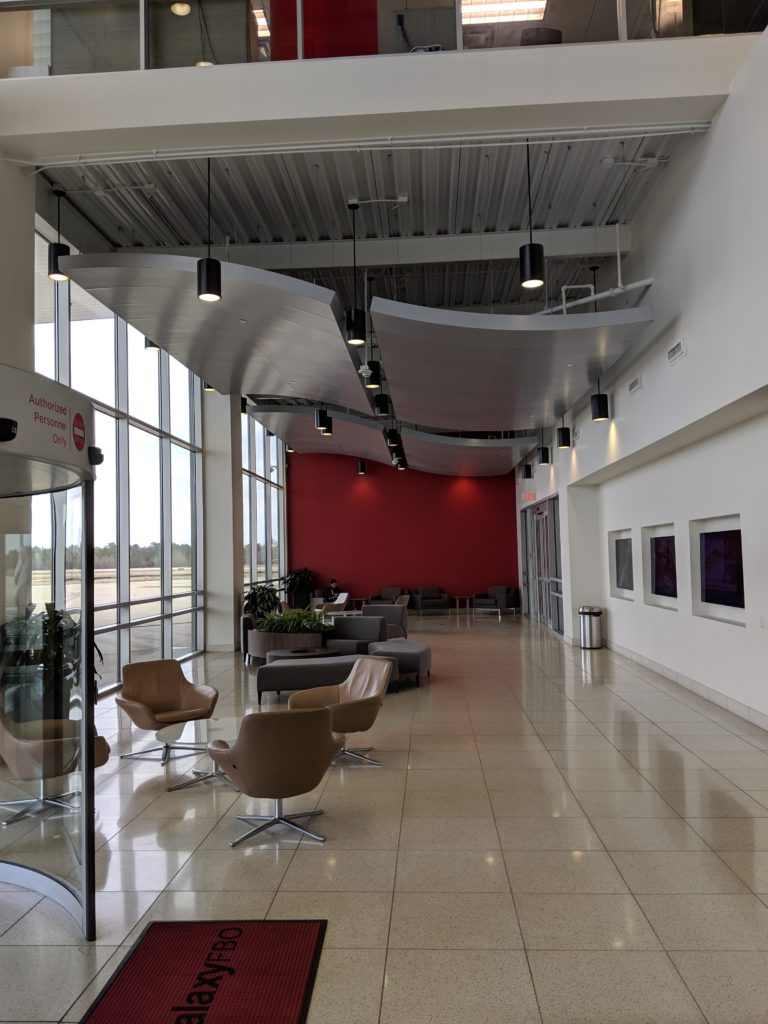
The staff at the FBO are very friendly even to GA pilots in their little bug smashers. Fuel is reasonably priced and they have a truck that can fill you up if needed. There’s no fee if you want to stop in quickly and run back out the same day, which is very handy especially for those who want to visit the restaurant on the third floor.
Restaurant
Unless you have family in the area, the only reason you would want to visit this airport is probably to eat at the restaurant.
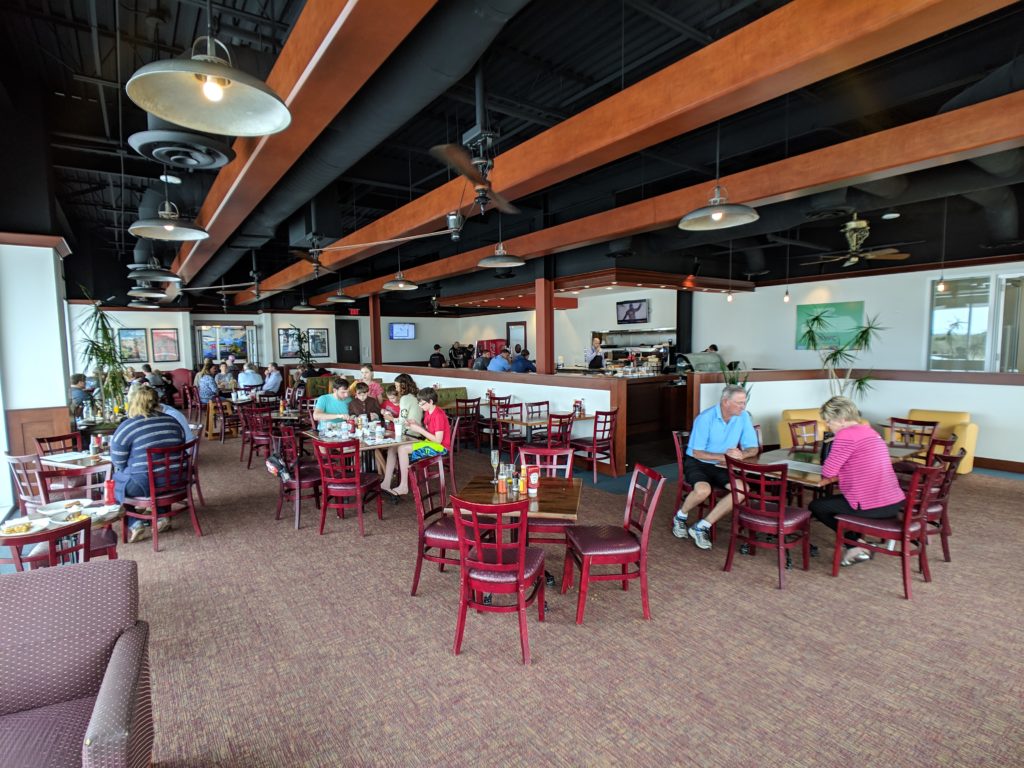
Black Walnut is a chain of restaurants that has a handful of locations around the United States, one of which is on the third floor of this FBO. The menu is similar to other locations around the United States, specifically offering a good selection of breakfast food, burgers, sandwiches, and salads. Beyond that I haven’t really ventured into their menu.
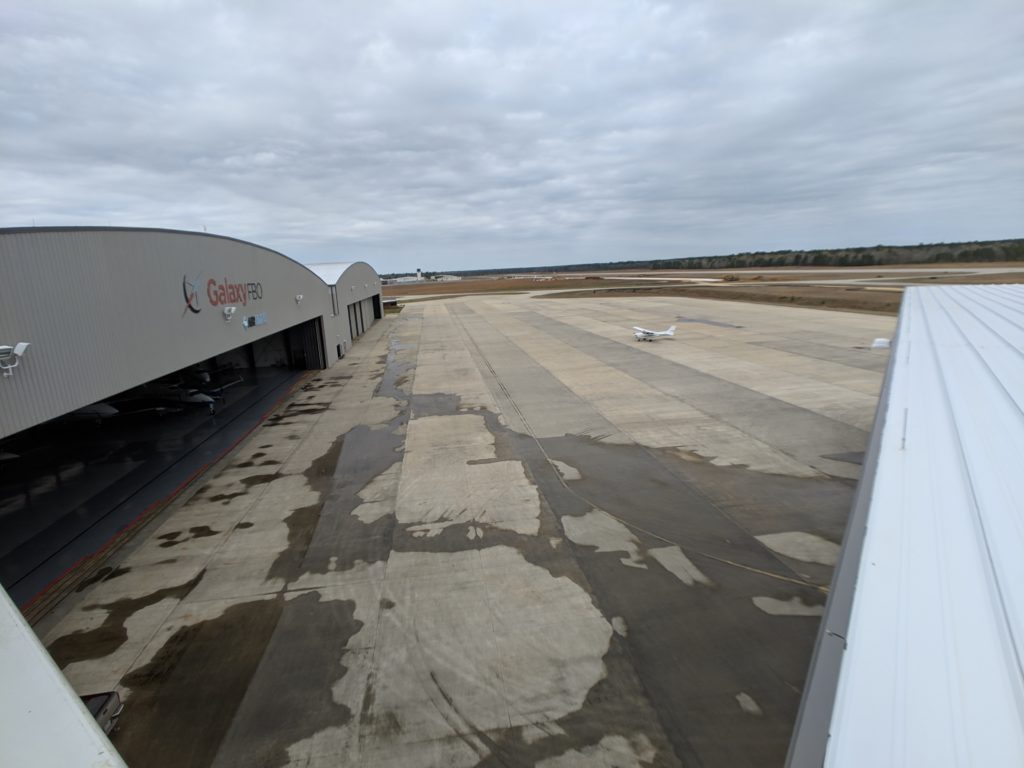
The food at the restaurant is delicious, and service is fairly quick. The seating area looks out over the roof of the FBO which spoils a lot of the visual appeal, but the runway is still visible beyond the edge of the roof and there’s an open air patio that doesn’t really have the obstruction in front of it for those who want a better view.
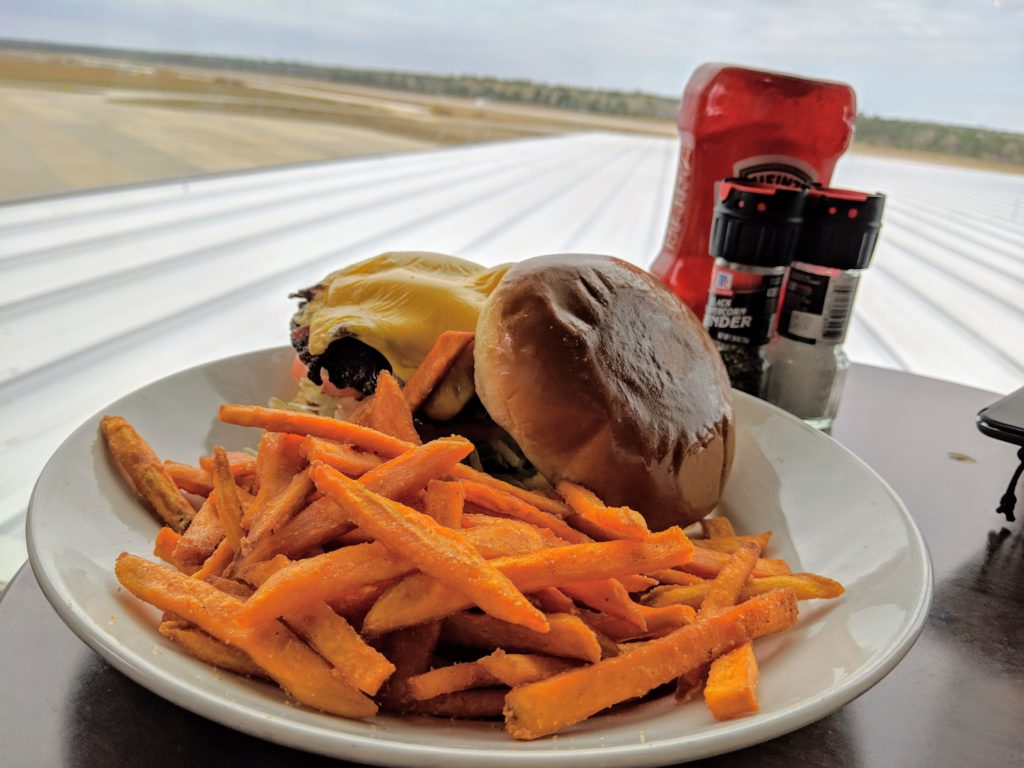
The only difference between this location and their other ones is the addition of a “hundred dollar hamburger” which comes with a $100 gift card, an appreciated nod to the mythical hundred dollar hamburger runs that have now ballooned past $300 for most people. Even without the gift card the hamburger is worth the trip, delicious and reasonably priced.
Departure
Like most towered airports there’s a ground and a tower frequency. After getting the latest ATIS call up the ground frequency for taxi instructions, IFR clearance, and transponder code for flight following.
One nice thing about the Galaxy FBO is that there’s a south entrance and exit directly from the hold short line on runway 32. So if the winds are out of the north it’s a quick and painless taxi to the hold short line and departure.